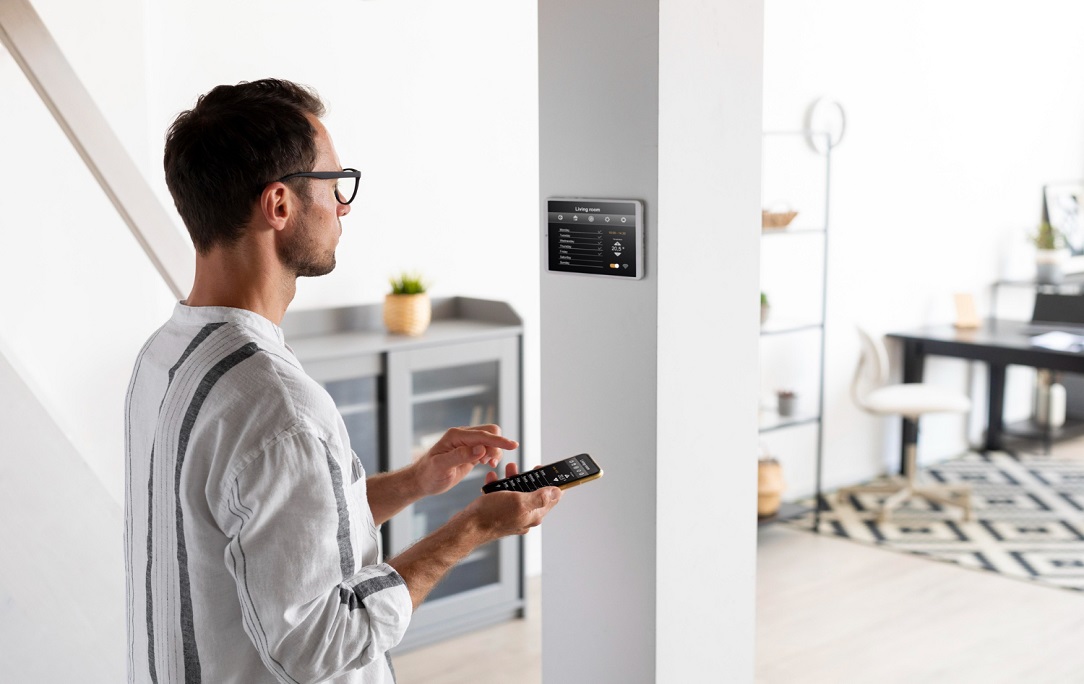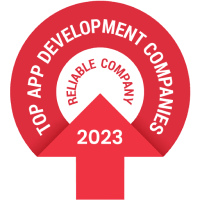The process of creating smart home apps is crucial in determining how modern living will progress as our houses get more and more connected. In order to build a coherent ecosystem that can respond to human needs with previously unheard-of intelligence, this journey entails the integration of artificial intelligence, the Internet of Things, and user-friendly interfaces.
Come along as we explore the nuances of developing apps for smart homes and how this technological advancement is changing and altering how we use and interact with our living surroundings.
How Do You Automate Your Smart Home?
Smart home automation operates through the interconnectedness of devices within your home, all linked to a central hub or platform. This hub, which can be a physical device like a smart speaker or a cloud-based service, serves as the command center for seamless integration. Utilizing a smartphone, tablet, or voice assistant, users gain control over these connected devices. The system comprises three fundamental components:
Sensors:
When it comes to seeing changes in the environment, such motion, temperature, or light, sensors are essential. When a sensor detects a change, it sends the information to the platform or central hub, which then starts the appropriate action.
Controllers:
In charge of overseeing the operation of other gadgets in the house, controllers are represented by products like smart lightbulbs, thermostats, and plugs. They carry out the required actions after receiving instructions from the platform or central hub.
Actuators:
The system’s actual physical execution units are known as actuators. These gadgets, which can be thermostats, door locks, or lightbulbs, physically regulate various aspects of the house. Actuators carry out the necessary adjustments when signaled by the platform or central hub through controllers, enabling the smart home automation system to function.
Statistics on the Smart Home Automation Industry
Noteworthy statistics underscore this trajectory, with projected revenues of $117.60 billion in 2022, anticipating a robust market size expansion at a CAGR of 12.47% from 2022 to 2027, reaching $222.90 billion by the latter year.
Forecasts also indicate a surge in active households within the smart home market, expected to reach 672.60 million by 2027.
This signifies a substantial compound annual growth rate (CAGR) of 21.1% between 2021 and 2028, underlining the escalating adoption of smart home innovations and the expanding landscape of opportunities for smart home apps.
Must-Have Features For Smart Home App
Device Compatibility:
Make sure the App Development Company’s smart home app works with a variety of smart devices to promote smooth interoperability and integration within the varied network of connected houses.
Intuitive User Interface (UI):
Give top priority to a UI that is easy for users to navigate and control, improving the overall user experience and making the application usable by users with different levels of technical expertise.
Robust Security Measures:
Put strong security measures in place to protect sensitive user data and guarantee users’ privacy in smart homes. The architecture of the app should include both safe authentication methods and encryption algorithms.
Real-Time Monitoring:
Enable customers to keep an eye on and receive status updates for their smart home appliances in real time. This function increases user awareness and makes it easier to react quickly to situations in the home that change.
Remote Control Functionality:
Give consumers the option to utilize the app to remotely control smart devices. The ability to operate lights, security systems, and thermostat settings using a remote control adds flexibility and convenience to the user experience.
Energy Efficiency Monitoring:
Provide tools that let users keep an eye on and maximize the amount of energy used in their smart homes. This could include the capacity to remotely control energy-intensive devices, suggestions for efficiency enhancements, and insights into trends of energy usage.
Notification and Alerts:
Establish a reliable notification system to alert users of the state of their smart home appliances. The app plays an important role in keeping people linked to their homes, especially with its alerts for low battery levels, unexpected activity, and security breaches.
Compatibility Updates:
Regularly update the app to ensure compatibility with emerging smart home technologies and devices. This proactive approach by the App Development Company ensures that users can seamlessly incorporate new devices into their existing smart home ecosystems.
The process for Developing Apps for Smart Homes
Building an IoT-based smart home app necessitates a structured approach to guarantee its efficiency and user-friendliness. Here is a comprehensive step-by-step guide to the development process, emphasizing the role of an IoT Development Company:
Step 1: Idea Validation and Market Research
Prioritize idea validation and conduct thorough market research. Understand the target audience, analyze competitors’ offerings, and validate the app idea to identify unique selling points.
Step 2: UI/UX Design
Craft an intuitive and visually appealing user interface (UI) and user experience (UX) design. This step is crucial for enhancing user engagement and satisfaction.
Step 3: Defining Features and Functionality
List the app’s essential features and functionalities, encompassing device control, automation scenarios, energy monitoring, and user authentication.
Step 4: Technology Stack Selection
Choose an appropriate technology stack, incorporating IoT technology, cloud platforms, and mobile app development tools tailored to the project’s requirements.
Step 5: Development and Integration
Under the guidance of the IoT Development Company, initiate the development phase, ensuring seamless integration with various IoT devices and protocols for efficient communication.
Step 6: Security and Data Privacy
Implement robust security measures, safeguarding user data and ensuring secure communication with connected devices to build trust among users.
Step 7: Testing and QA
Engage in rigorous testing, to identify and address bugs or issues. This step ensures a stable and reliable app performance before deployment.
Step 8: Deployment and Maintenance
With the support of the IoT Development Company, launch the app on relevant app stores. Additionally, provides continuous maintenance and updates to enhance functionality and security, ensuring the app’s sustained performance and relevance in the dynamic IoT landscape.
Conclusion
The realm of smart home app development stands as a dynamic and burgeoning field, brimming with opportunities to craft seamless, intelligent, and personalized home automation experiences. The potential within this domain is vast, and App Development Companies play a pivotal role in harnessing and realizing it.











